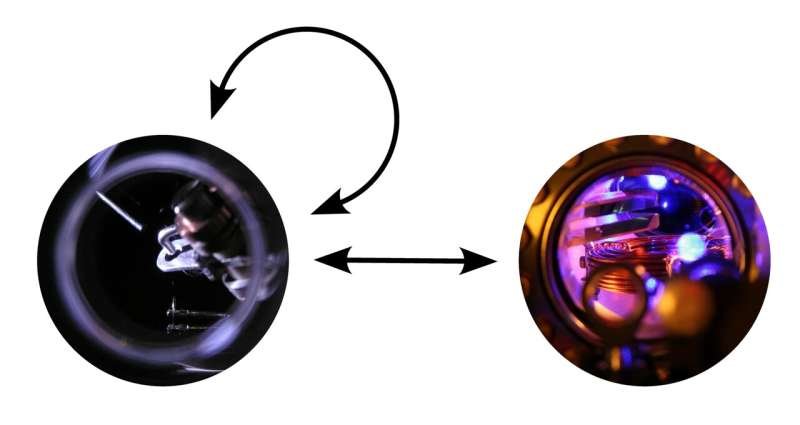The Daily Observer London Desk: Reporter- John Furner
Can dark matter interact with photons and influence atomic structure? A case for optical atomic clocks: Two different types of such clocks were compared at the Physikalisch-Technische Bundesanstalt (PTB) within the scope of the Collaborative Research Center DQ-mat and the Cluster of Excellence QuantumFrontiers. It is the most accurate search for an interaction of ultralight dark matter with photons to date.
Existing detection limits for a possible coupling have been improved by more than an order of magnitude through this work—over a wide range of dark matter particle mass. While no evidence of a dark matter coupling has been found, the work brings us closer to understanding the nature and potential interactions of dark matter. The results of the investigation have been published in the current issue of the journal Physical Review Letters.
Astronomic observations indicate the existence of so-called “dark matter” which makes up more than 80% of all matter and, as far as we know, interacts with ordinary visible matter only via gravity. In particular, no proof for the interaction with photons (the elementary particles of which also light is composed), has yet been established—hence the term “dark” for this type of matter. It remains a great mystery what dark matter is made of and whether there are interactions with conventional matter that are still unknown.
A particularly promising theoretical approach implies that dark matter could consist of particles that are extremely light and behave more like waves than individual particles: so-called “ultralight” dark matter. In this case, previously undiscovered, weak interactions of dark matter with photons would lead to miniscule oscillations of the fine-structure constant.
The fine-structure constant is the natural constant that describes the strength of the electromagnetic interaction. It determines the atomic energy scales and thus influences the transition frequencies that are used as references in atomic clocks. Since different transitions are sensitive to possible changes of the constant to varying degrees, comparisons of atomic clocks can be used to search for ultralight dark matter. For this purpose, researchers at PTB have now used an atomic clock that is particularly sensitive to possible changes of the fine-structure constant in such a search.
For this purpose, this sensitive atomic clock was compared with two other atomic clocks with lower sensitivities in months-long measurements. The resulting measurement data were investigated for oscillations, the signature of ultralight dark matter. Since no significant oscillations were found, the dark matter remained “dark,” even under closer examination. A detection of the mysterious dark matter was therefore not achieved. The absence of a signal allowed for the determination of new experimental upper limits on the strength of a possible coupling of ultralight matter to photons. Previous limits were improved by more than one order of magnitude over a wide range.
At the same time, the researchers also studied whether the fine-structure constant might change over time, for example by increasing or decreasing very slowly. Such a variation was not detected in the data. Here, existing limits were also tightened, indicating that the constant remains constant even over long periods of time.
In contrast to previous clock comparisons, where each atomic clock required its own experimental system, two of the three atomic clocks were realized in a single experimental setup in this work. For this purpose, two different transition frequencies of a single trapped ion were used: The ion was interrogated alternately on both optical transitions. This is an important step toward making optical frequency comparisons even more compact and robust—for example, for a future search for dark matter in space.



